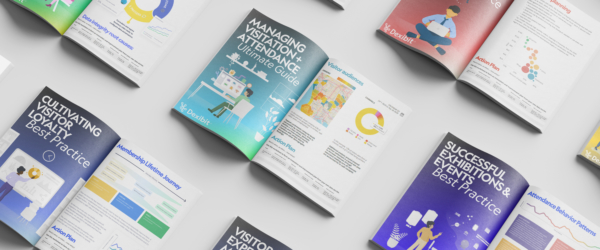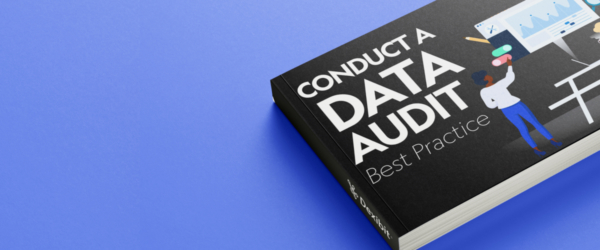20 questions to ask of your attraction’s visitation
- In Visitation, Visitation Data, Visualisations
- Articles
- 5 min read
How is your attraction’s visitation performing?
These questions provide a framework for a full impact assessment report of COVID-19, when comparing before and after shutdown. Many of these areas will have moved completely in the wake of the crisis, particularly with capacity constraints, tourism reduction and varying demographic behaviors.
In addition to analyzing past performance, these angles also uncover factors that can be used to predict future visitation, through either forecasting using machine learning or with added simulation for scenario planning, which can in turn be used to set plans and goals. Over time, these predictions can then power dynamic responses by the visitor attraction – such as for capacity, pricing, campaigns and more.
How is attendance performing?
Handling attendance is more than just understanding a single headline number – there’s lots of insight to be gained in the patterns and trends behind this metric to use in communicating with the attraction team and governance stakeholders.
1. How is visitation performing?
An eye on top line visitation fuels a performance oriented culture amongst the team. In addition to total visitation statistics, track daily averages to define quiet versus busy days. If constrained, this may consider capacity management and related show rates and dwell times if relevant, or if not, reflections may be demand focused.
2. What’s your venue’s year on year growth?
Given most visitor attractions experience seasonal demand, year on year growth is the best measure of success for most metrics in the venue, particularly visitation and revenue. Before COVID-19, over 5% was considered great and over 10% exceptional. Reflect on actual versus expectations and any other changes in related aspects of operations, such as average spend or membership conversion.
3. What about this financial year?
As well as measuring a time period against the equivalent in the year prior – most venues report on a fiscal year basis, usually in the form of performance to date and projected forward to close. Sometimes, the positioning of major events such as shutdowns can mean dramatically different results across the calendar versus financial year. That way, there’s no surprises come reporting time.
4. How is your venue’s performance tracking to goal?
Managing topline goals on at least a periodic basis is a natural step when infusing data literacy in your organization’s culture – at least on visitation, if not membership, revenue, activities, tickets and more. Managing goal burn up (tracking performance to goals over time) is a powerful way to see how performance is unfolding.
5. How does your venue’s recovery compare to benchmark?
Particularly during the economic recovery in the wake of COVID-19, benchmarking provides an exceptionally important point of comparison to add context for consumer demand. Dexibit’s unique Recovery Index benchmarks available for global, local and group peers deepen the picture of what’s happening in your visitor’s return.
When are visitors coming?
Understanding what impacts visitor demand and the decision to visit is a complex web of interconnected factors – including influences within the venue’s control (such as marketing campaigns) and those outside of this sphere (such as the weather). Where patterns such as seasonality are heavily pronounced, venues have a significant strategic decision to make – either lean into organic buying behavior and scale operations in response, or attempt to shift demand distribution more evenly through mechanisms such as marketing and programming.
6. What is the seasonal variation for visitor trends?
With most venues experiencing significant seasonality in visitation, it pays to know just how pronounced this is – putting numbers around these trends helps calculate return on investment for scheduling considerations, capacity optimization and more. Given seasonality, goals should be set at least a periodic level of monthly or weekly rather than annually, given goal burn up won’t occur evenly over the course of the year.
7. How distributed are visitors over opening days?
The same is true for distribution across days, particularly to inform the decision of opening days to reduce costs or maximize visitation, plus price variation or marketing promotion to spread visitation. Given seasonality, analysis should be performed for both the high and off seasons separately. Given weekday variability, goals should ideally be set at a daily granular level, given goal burn up won’t occur evenly over the course of the week.
8. How distributed are visitors over opening hours?
At the most granular level, viewing visitation trends throughout the day helps to inform the decision of opening hours to reduce costs or maximize visitation, plus price variation or marketing promotion to spread visitation. It’s also useful to communicate quiet times to visitors for those wanting to avoid crowds when planning their visits. Obtaining hourly data may require the introduction of onsite hardware or a change of procedure in how visitation is manually recorded.
9. What impact does weather have on a decision to visit?
Anecdotal beliefs about what influences a visit often differ to actual visitor behavior, usually bias towards outliers, with weather being a common area of this variance. When analyzing weather impact, analyze both weather type and weather condition (such as rainfall, windspeed, temperature or humidity) by season, as visitor behavior may differ significantly between them – for example, a rainy summer’s day as opposed to a rainy winter’s day. Additionally, it can be worth checking the weather forecast and actual conditions, for regions where these commonly differ.
10. What effect does almanac have on visitation patterns?
For many visitors, what’s happening in and around the venue has a significant impact on their decision to visit. This can include factors such as public holidays and school terms, through to things such as sports games and music concerts, festivals and parades, religious observances and security threats, plus much more. Having an ‘almanac’ calendar of onsite activities and regional events which can be analyzed against visitation helps understand the influences of various external context and the uplift effect of the venue’s own exhibitions, experiences and events. It is also useful to collect a timeline of notes of one off incidents such as evacuations, high profile VIP visits or unexpected closures to provide context when reflecting back on visitation outliers.
Who is coming?
There are many aspects to understand who is visiting to help tailor marketing outreach and visitor experience to these profiles and their characteristics or demographics.
11. What proportion of visitors purchase various ticket types?
Visitor demographics, particularly around age, help shape public programming decisions and marketing promotion messaging. The ticket type value usually represents who visits, such as an adult, child, senior, student, military or family pass. For non ticketed venues, intercept surveys are likely to be required to monitor audience demographics.
12. What catchment do visitors come from?
Understanding catchments helps monitor the differing patterns and trends for various markets – for example, to time marketing promotion for out of town visitors with the holidays of their home region and increase local promotion during the tourist off season. The four most popular catchments to observe are local (usually within a set radius and accessible by public transport), drive in (usually within a 2 hour drive time), domestic tourist and international tourist. If zip codes (or country, for internationals) are not collected through ticketing or survey, this can be easily monitored by a meet and greet question delivered by front of house staff ‘Where are you visiting from today?’ or even gamified guest interactive at exit, such as placing a pin on a map.
13. How spread out is visitor origin?
At a more granular level, understanding the spread of visitor origin helps inform everything from where to target advertising such as mail drops or billboards through to assessing visitor diversity (also useful for funding evidence). Visitor origin is most easily assessed through zip or postal codes, which may need to be treated as personally identifiable in some regions. If not collected on a ticket or survey, this can be alternatively captured from the WiFi captive portal or other intercept opportunities. If visitor facing staff may be entering this data, for example at box office ticket issue, make sure staff are aware not to enter the venue’s zip code by default as this will impact data integrity.
14. What is the variation in group size?
Many attractions depend on group bookings from tours or education as a significant contributor to performance, often a part of the business model managed separately through relationship based sales as opposed to marketing generated demand. Understanding the spread of group sizes helps inform product management decisions, sales targets and operational handling for these experiences to optimize visitor outcomes for both the group and other their impact on the general public.
15. What channels refer the most visitors?
Online Travel Agencies (OTA), ticket resellers or schemes such as city pass tickets often general a significant portion of visitor demand. As a result, channel management should involve performance monitoring and periodic reviews, with the added complexity of revenue settlement to split earnings between the venue and commissioned partners.
What are visitors doing?
Knowing what visitors are doing once onsite at the venue helps shape marketing outreach and visitor experience to these personas and their behaviors or preferences.
16. How are various ticketed products performing?
The visitor attraction business model is complex in its various lines of business, and often especially so in the product portfolio of ticketed activities. Given complexity usually is expensive and dilutative, understanding return on investment helps prioritize and simplify the product portfolio. The ticket product value usually represents what the visitor does, such as general admission, special exhibition, VIP tour, etc.
17. To what degree are visitors participating in various activities?
If not ticketed, activities such as exhibitions, experiences and events can be measured through other means, such as footfall counts or location analytics. Overall, this will help understand which are contributing significantly to a visit and can ideally be correlated with other visitor outcomes to provide a holistic view of activity performance. Over time, demand curves indicate audience adoption behaviors around a newly introduced activity (useful for scheduling marketing and events) or falling demand when an activity is waning (useful for making retirement decisions).
18. What is the uplift on general attendance from the schedule of activities?
By analyzing visitation set against exhibitions, experiences or events, any uplift effect to indicate an activity is actively drawing visitors can be identified – this can also be used to evaluate return and make predictions based on future scheduling.
19. How many visitors return?
Repeat attendance can be identified through member scans, location analytics and intercept surveys. Particularly for local or drive in visit catchments, loyalty is an important lagging indicator of visitor satisfaction. Looking at loyalty in different ways helps to identify how well member conversion opportunity is utilized, or room for additional offers such as a multi day or come back pass.
20. Why don’t people visit?
A difficult aspect to measure, research on people who don’t visit and their reasons for not visiting can be achieved by market research such as surveys and focus groups. This research can be complemented by comparing to actual visitor data to identify whether this feedback simply reflects market share, or reflects gaps in demographic, origin or other target markets currently underrepresented in visitation.
Want to learn more about Dexibit?
Talk to one of our expert team about your vision to discover your data strategy and see Dexibit in action.






